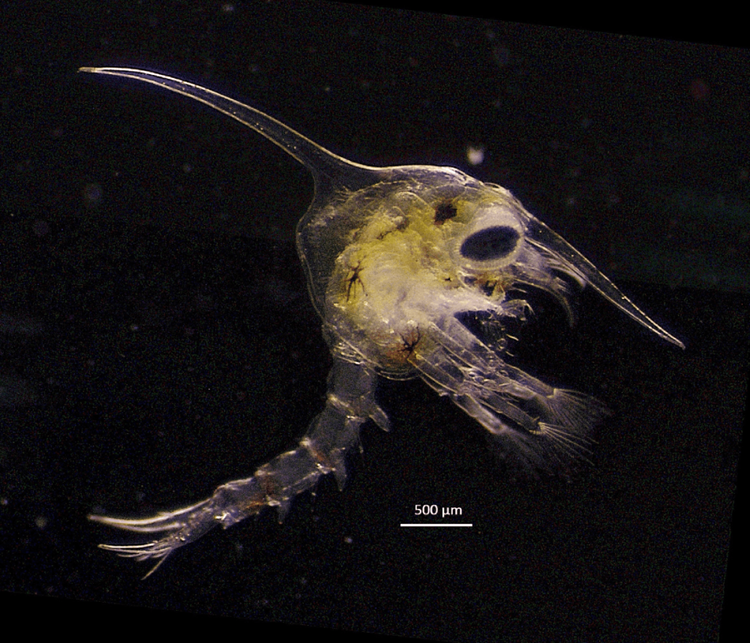Marine zooplankton

Zooplankton sampling began in April 2014. Samples are collected by towing nets through the water column. Two types of nets are used: a single ring net (200 micrometer mesh) towed up and down (vertical) throughout the full water column and double-ring (bongo) nets (335 micrometer mesh) towed at an angle through the upper 30 meters of the water column. Flow meters are attached to the nets to measure the amount of water sampled. Vertical tows are done at three locations and bongo tows at two of those locations two times a month February-November and once a month January and December Other water quality parameters and phytoplankton are collected with the zooplankton samples.
Samples are analyzed at the University of Washington to determine abundance and biomass (weight) of different types of zooplankton. Zooplankton captured in vertical tows are identified to the species level whenever possible for most taxonomic (classification) groups. Broader taxonomic groups are identified in the bongo tows, with some groups identified to the species level. Life stages (e.g., whether they are larvae or adults) for certain organisms are also determined.
More Information
The goals of this monitoring are to:
-
Catalog and quantify zooplankton present in the Central Basin of Puget Sound throughout the year.
-
Provide an understanding of the Puget Sound Central Basin food web, especially in relation to young salmon.
-
Evaluate how zooplankton respond to large-scale and regional climate patterns, water conditions, and primary producers (phytoplankton) over short and long time scales.
-
Measure spatial (space) and temporal (time) variability in community composition, abundance, and biomass over seasonal and annual timescales.
-
Support regional efforts and collaborations, such as the Puget Sound Zooplankton Monitoring Program.
Download Data
Download data from our online database.
Note: some data may be provisional. Contact MarineWQ@kingcounty.gov for information about the most recent quality control of data.
Documentation
Learn more about our program by reading documents such as the latest sampling and analysis plan and read relevant reports and presentations.
Contact us with any questions or access additional resources in the Science Section Library.

 Translate
Translate